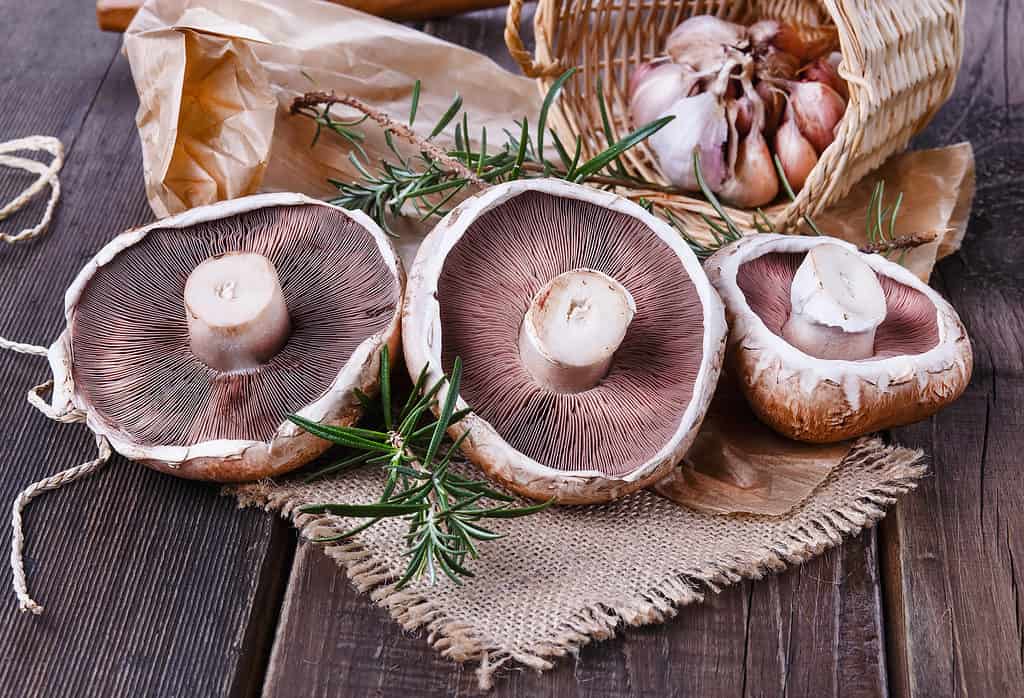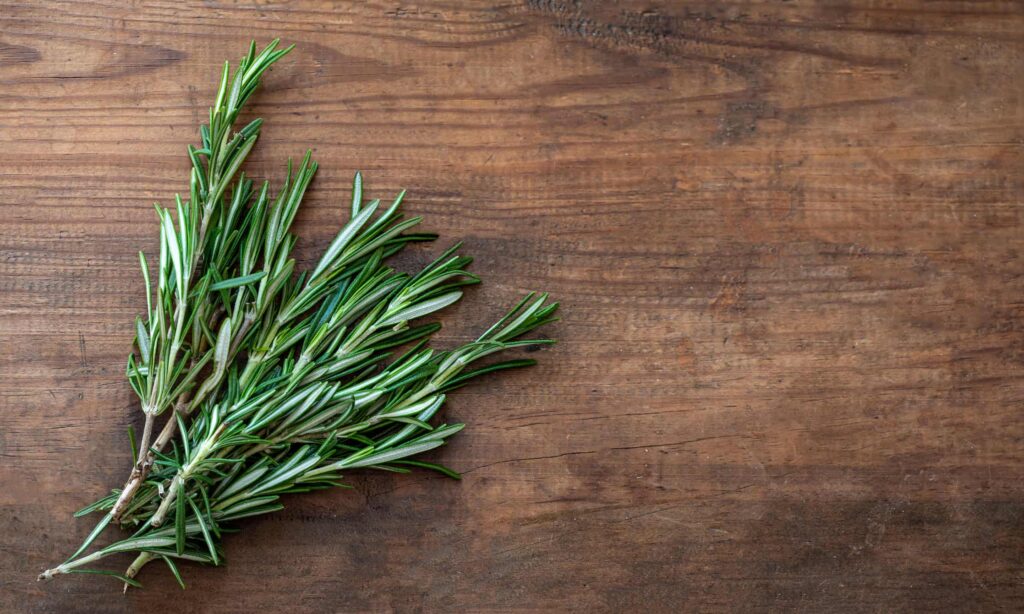Welcome to your complete guide on how to grow rosemary! Whether you’re a seasoned gardener or just starting out, this article will provide all the information you need to successfully cultivate this fragrant and versatile herb in your own backyard. Rosemary is a popular choice for home gardeners due to its hardiness, beautiful foliage, and culinary uses. Not only does it add flavor and aroma to dishes like roasted meats and potatoes, but it also has medicinal properties that have been used for centuries. From choosing the right location for your rosemary plant to harvesting its leaves at peak freshness, we’ll cover everything you need to know about growing this beloved herb at home. So let’s get started!
Rosemary Overview

Rosemary is an evergreen shrub that belongs to the mint family. It has a unique, pungent aroma and flavor that makes it a popular herb in many cuisines around the world. Rosemary is native to the Mediterranean region but can now be found growing in various parts of the globe.
This plant typically grows up to 4 feet tall and produces needle-like leaves that are about 1 inch long. The leaves are usually dark green on top and lighter underneath, with a slightly curved shape. In addition to its culinary uses, rosemary has also been used for centuries for its medicinal properties, such as improving digestion, reducing inflammation, and boosting memory.
Growing rosemary requires well-draining soil and full sun exposure. It’s also important not to overwater this plant as it prefers dry conditions. With proper care, rosemary can thrive both indoors or outdoors in milder climates.
Overall, rosemary is an easy-to-grow herb that offers many benefits beyond just adding flavor to your dishes, making it an excellent choice for any home garden or kitchen!
Types of Rosemary

Rosemary enhances the taste of many types of dishes and is used by cooks all over the world.
©Yulia von Eisenstein/Shutterstock.com
When it comes to growing rosemary, it’s important to understand the different types available. There are two main types of rosemary: upright shrub and ground cover. The upright shrub type grows tall and straight, while the ground cover variety sprawls along the ground.
For culinary use, there are a few cultivars that stand out as being particularly excellent. While any R. officinalis can be used for cooking purposes, those with broader leaves tend to contain more aromatic oil – making them ideal for adding flavor to your dishes.
One cultivar that is beloved by many chefs is ‘Tuscan Blue.’ This type of rosemary features narrow leaves and a strong aroma, which makes it perfect for use in savory dishes like roasted meats or stews. Other good options include ‘Blue Spires’ and ‘Miss Jessup’s Upright,’ both of which have broad leaves and offer a similar flavor profile.
Another option worth considering is ‘Spice Island,’ which you may find sold in the herb section of your local nursery or garden center. This cultivar grows into an upright shrub that can reach heights of 4-5 feet tall, making it an impressive addition to any garden bed or container planting.
No matter what type of rosemary you choose to grow, be sure to provide plenty of sun exposure (at least six hours per day) and well-draining soil with good organic matter content. With proper care and attention, your rosemary plants will thrive year after
How to Plant

Plant new rosemary seedlings after all danger of frost has passed in the spring.
©Switlana Sonyashna/Shutterstock.com
Growing rosemary can be a rewarding experience, whether you choose to plant it in the ground or in containers. However, there are a few important things to keep in mind before getting started. One of the most crucial considerations when growing rosemary is its dislike for wet roots. If your soil tends to be heavy or retains moisture too easily, it’s best to plant your rosemary in a pot or raised bed instead.
Another important factor to consider is that rosemary does not transplant from ground to container very well, so if you plan on bringing your plants inside during colder months (especially if you live in climates with harsh winters), starting them off in pots may be the better choice.
If you do decide to plant directly into the ground, it’s recommended that you mix several inches of organic matter, such as compost, into the soil beforehand. This will help create nutrient-rich and fertile soil conditions that will promote healthy growth and development for your plants.
On the other hand, if planting into containers, use a lighter-weight soil mix specifically designed for container gardening. It’s also advisable not to crowd these starter plants; space them at least 2-3 feet apart from one another as they don’t like being cramped up together.
If starting seeds or cuttings indoors, ensure that their environment remains moist while germinating and developing roots. Keep an eye out since seed germination can take anywhere between two to three weeks – patience is key! Once they’re about four inches tall, then transfer those outside, where they’ll have more space and light.
When to Plant

Shelter your young rosemary seedlings from the scorching sun and the first frosts.
©iStock.com/Oxana Medvedeva
When it comes to planting rosemary, timing is essential. The best time to plant the herb is in spring, once the threat of frost has passed and the soil has started to warm up. Ideally, the soil temperature should be around 70ºF or 21°C for optimal growth. However, if you live in warmer climates where frosts are less of a concern, you can also plant rosemary in the fall.
While some gardeners might choose to start their rosemary plants from seed indoors, this herb isn’t known for being easy to germinate from seedlings. Seedlings will often take longer than usual to grow before they’re ready for harvesting. Instead, most gardeners typically opt for young plants purchased at nurseries as these are easier and more reliable when it comes to growing healthy rosemary plants.
If you have access to an established rosemary plant and would like to propagate your own cuttings instead of buying new ones each year, this is actually quite simple with rosemary! Simply take a cutting from an existing plant and place it into the water until roots form, then transplant it into the soil so that it can continue growing on its own.
For those who do wish to try starting their own seeds or cuttings indoors before planting outside later on down the line: keep in mind that patience will be required as this process takes time – usually around 8-10 weeks before last spring frost hits (depending on your exact location). Nevertheless, with proper care and attention paid throughout every stage
Companion Plants

Carrots make great companion plants with rosemary.
©iStock.com/hachiware
Companion plants refer to the practice of planting certain types of plants in close proximity to each other for mutual benefit. Some plants make great companions because they help one another by providing nutrients, deterring pests, and improving soil health. Others can be detrimental if planted together due to competition for resources or susceptibility to similar diseases.
When it comes to growing rosemary, beans, cabbage, sage, and carrot are all excellent companion choices. Beans add nitrogen back into the soil, which is beneficial for rosemary’s growth, while cabbage acts as a natural pest repellent against caterpillars and aphids. Sage releases aromatic compounds that can deter pests like slugs from attacking rosemary, while carrots offer shade protection during hot weather conditions.
By selecting these plant companions carefully when growing rosemary, you can not only improve the overall health and quality of your harvest but also create an aesthetically pleasing garden with various colors, heights, and textures that complement each other beautifully.
Rosemary Plant Care

Seasoning fish with rosemary and lemon is a popular practice.
©iStock.com/Ralers
When growing rosemary, it is important to keep the soil uniformly moist. However, it is equally important to allow the soil to dry out between waterings and not overwater the plant. Overwatering can harm the plant’s roots and lead to root rot.
If you are growing a potted rosemary plant, be aware that it will run out of nutrition more quickly than one grown in the ground. To combat this issue, feed your potted plant with an all-purpose balanced fertilizer after flowering.
To protect your rosemary shrubs during winter months, mulch them appropriately. Mulching helps insulate plants from harsh weather conditions but be careful not to let mulch get too close to the crown of the plant as this can cause rotting issues.
To ensure healthy regrowth each year, prune your rosemary before new growth begins in spring while also removing any dead wood. Avoid pruning too heavily, as leaving unpruned branches on a rosemary bush for too long will result in woody and straggly growth patterns, which do not produce optimal results.
Finally, if you’ve had your rosemary bush for about five years or longer and find yourself struggling with its health or productivity levels, consider replacing it entirely. It may also be wise to take cuttings or divide your existing plants when preparing for the next season if they won’t survive winter in your area.
Lastly, remember that during colder winter months, potted varieties should always come inside where temperatures are warmer so they do not freeze or become
How to Harvest

Rosemary is an awesome herb that can be harvested at any time of the year.
©iStock.com/Zakharova_Natalia
Rosemary is a wonderful herb that can be harvested at any time, but the best time to harvest it is when the new tips are soft in spring and summer. This ensures that you get the freshest taste from your harvest. As rosemary ages, its stems and leaves become tougher and more woody, making them better suited for infusing things with flavor or scent rather than eating.
Interestingly enough, even the flowers of rosemary are edible! They have a slightly sweeter taste compared to the rest of the plant and make a great addition as a garnish on salads or dishes.
When harvesting your rosemary plant, it’s important to keep an eye on maintaining its attractive shape. Snip off stems carefully so as not to damage surrounding branches. It’s also essential not to over-harvest. Never take more than one-third of your plant at any given time.
If you want to dry your rosemary for later use, hang upside-down bunches of the stem in dark warm places until they’re completely dry. Once dry, strip off all leaves from their stems before storing them in sealed jars. With these simple guidelines, you’ll be able to grow and enjoy delicious fresh herbs throughout the year!
How to Use

Rosemary essential oil is a popular use for this herb.
©iStock.com/marrakeshh
Rosemary is a versatile herb that can be used in a variety of dishes and preparations. Whether you have fresh or dried rosemary on hand, there are many ways to incorporate this fragrant herb into your cooking.
Fresh rosemary can be minced finely and added to marinades, vinaigrettes, and sauces. It also pairs well with roasted vegetables such as potatoes, carrots, and squash. To infuse meats with the flavor of rosemary, simply sprinkle leaves over chicken or beef before grilling or roasting.
Dried rosemary has a more concentrated flavor than fresh and should be used sparingly. It’s perfect for seasoning rubs for meat or poultry before cooking. Dried rosemary can also add depth to soups and stews when added early in the preparation process.
Beyond its culinary uses, rosemary has been known for centuries for its medicinal properties. Rosemary tea is said to aid digestion. Inhaling the scent of fresh rosemary can help boost energy levels and improve concentration.
Whether you’re looking to elevate your cooking game or reap the health benefits of this powerful herb, incorporating fresh or dried rosemary into your daily routine is easy and rewarding.
Thank you for reading! Have some feedback for us? Contact the AZ Animals editorial team.








